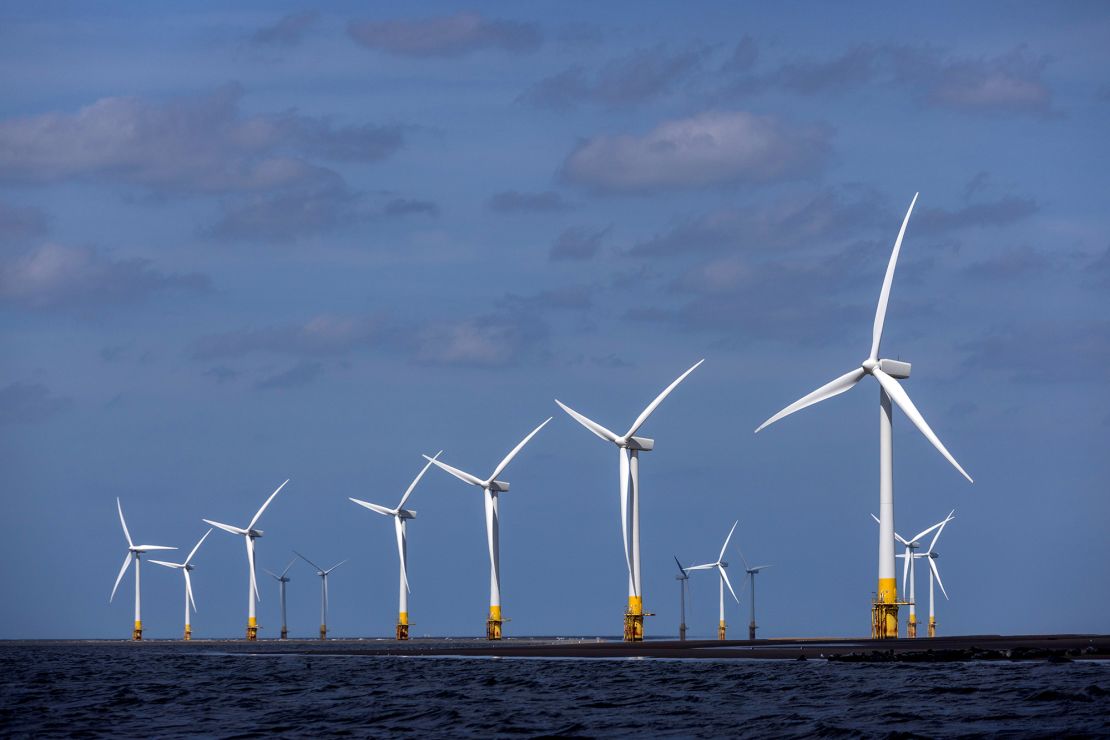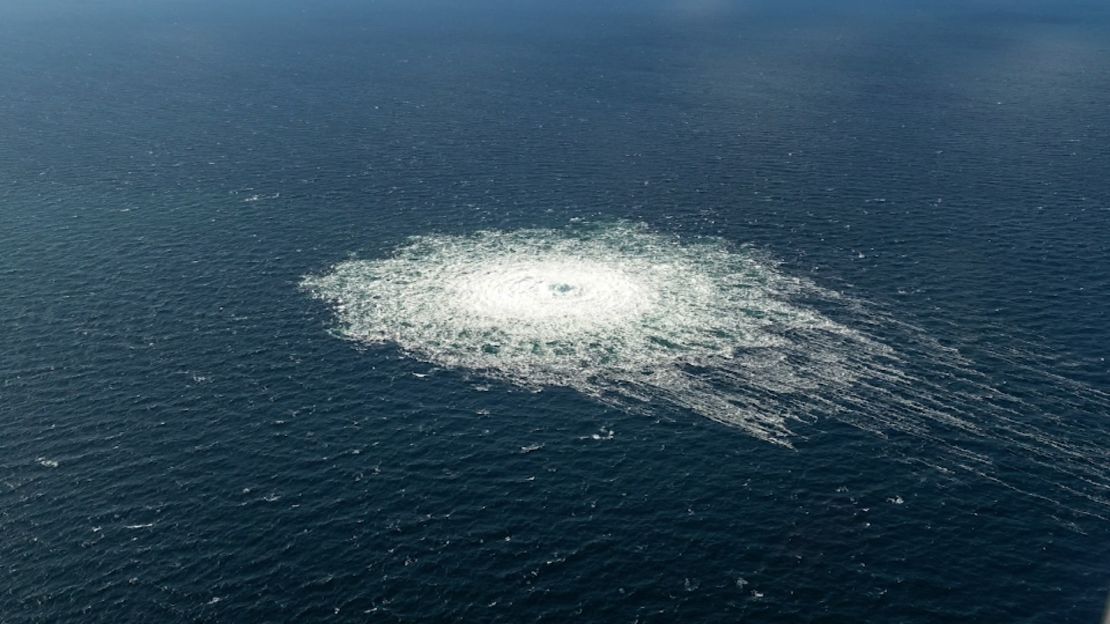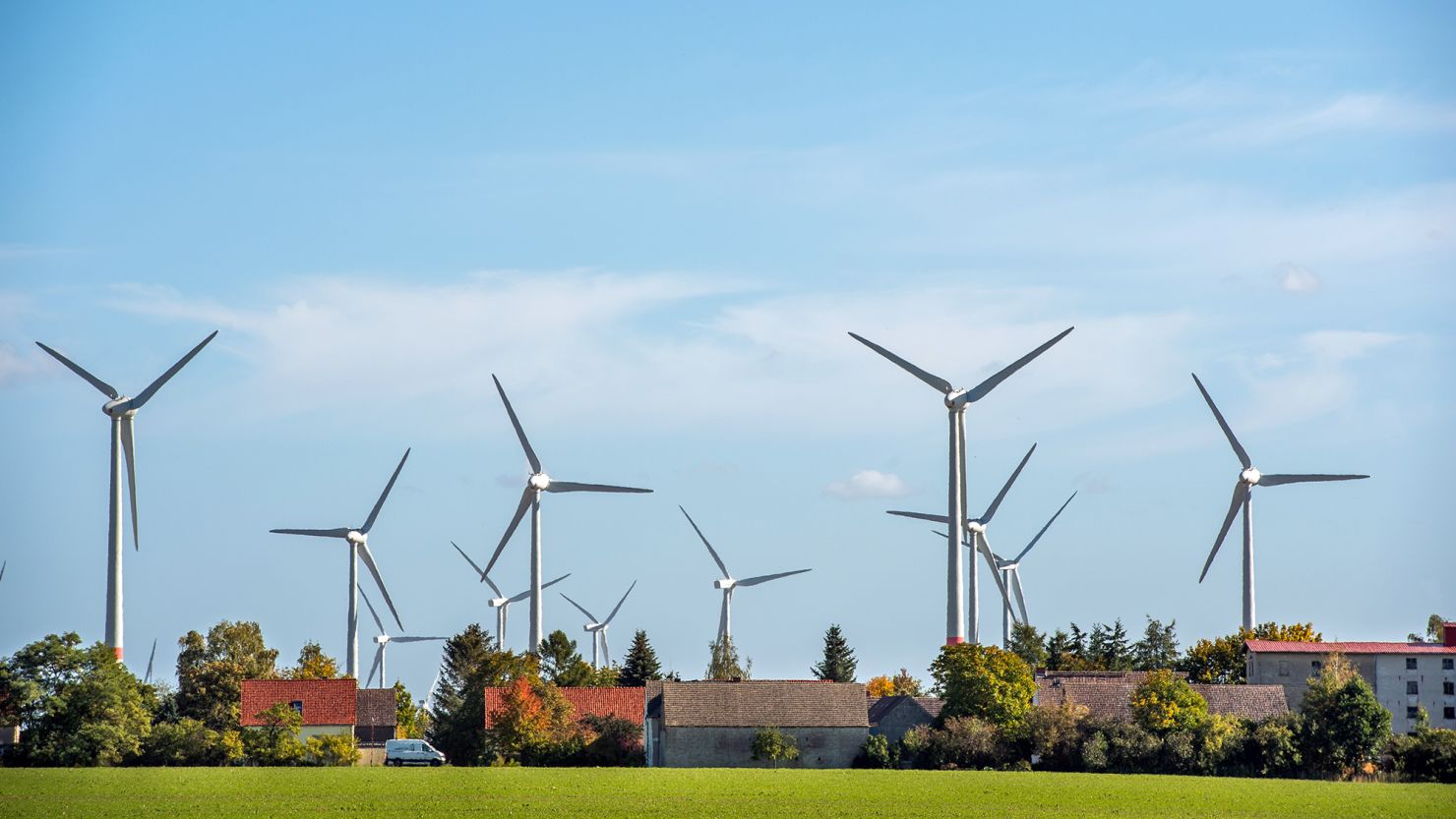Wind and solar power have made up a record 24% of the European Union’s electricity mix since Russia launched its war on Ukraine, a new report says, a boost that has also helped the bloc battle soaring inflation.
The growth in renewable power capacity has saved the 27-nation bloc €99 billion ($97 billion) in avoided gas imports between March and September, which is €11 billion ($10.8 billion) more when compared with the same period from last year, according to the report published by climate think tanks E3G and Ember.
The boost in renewables comes as Europe tries to wean itself off Russian gas, as Moscow reduces, even cuts off, European nations’ energy supplies to gain leverage in the conflict. The war has forced the the EU to confront its costly dependence on Russian gas, which in 2020 accounted for 41% of the EU’s imports of the fossil fuel.

Nineteen of the EU’s 27 member states have achieved record wind and solar generation since March, the report found.
Poland had the greatest percentage year-on-year increase of 48.5%, while Spain recorded the greatest absolute generation increase with 7.4 terawatt hours (TWh). Spain’s renewable generation alone avoided €1.7 billion ($1.7 billion) in imported gas costs.
The think tanks warned, however, that there was still a long way to go in reaching the bloc’s renewables potential. Fossil gas still made up around 20% of the EU’s electricity in the same period, at a cost of around €82 billion ($80.7 billion).
“Wind and solar are already helping European citizens,” Chris Rosslowe, senior analyst at Ember, said in a statement. “But the future potential is even greater.”
‘More renewables, less inflation’
Wind and solar generated 345 TWh of electricity across the EU from March to September this year – a record year-on-year increase of 13%. Total renewable capacity would have been far higher, had hydroelectricity not been down 21% due to droughts this summer, which scientists say have been made worse by the human-caused climate crisis.
The report’s key message is simply: “More renewables, less inflation.”
Nonetheless, European energy prices are still high. Russia’s gas restrictions to Europe have resulted in “the largest inflationary shocks in Europe since World War II, beating that of the oil crisis in the 1970s,” the report said. In September 2022, energy costs were up 40.8% on last year, accounting for 36% of the EU’s overall inflation figures.

Some EU countries have announced fiscal support packages worth hundreds of billions of dollars to try to limit this inflation, largely through subsidizing the use of fossil fuels for heating – but many businesses and households are still left with bills they cannot afford to pay.
The report warns that governments will be unable to sustain such costly programs “to compensate for high fossil energy prices over a long period of time.”

The EU has managed to fill its gas storage containers to get through the winter, but questions have been raised over how the bloc will fill the gap the following warming season. According to the report’s authors, this makes it “even more important now to shift the focus to measures that go beyond the 2022/23 winter.”
The ramp-up in renewables followed the European Commission “RePowerEU” proposal in May, which increased the renewables target from 40% of the total energy mix by 2030 to 45%.








